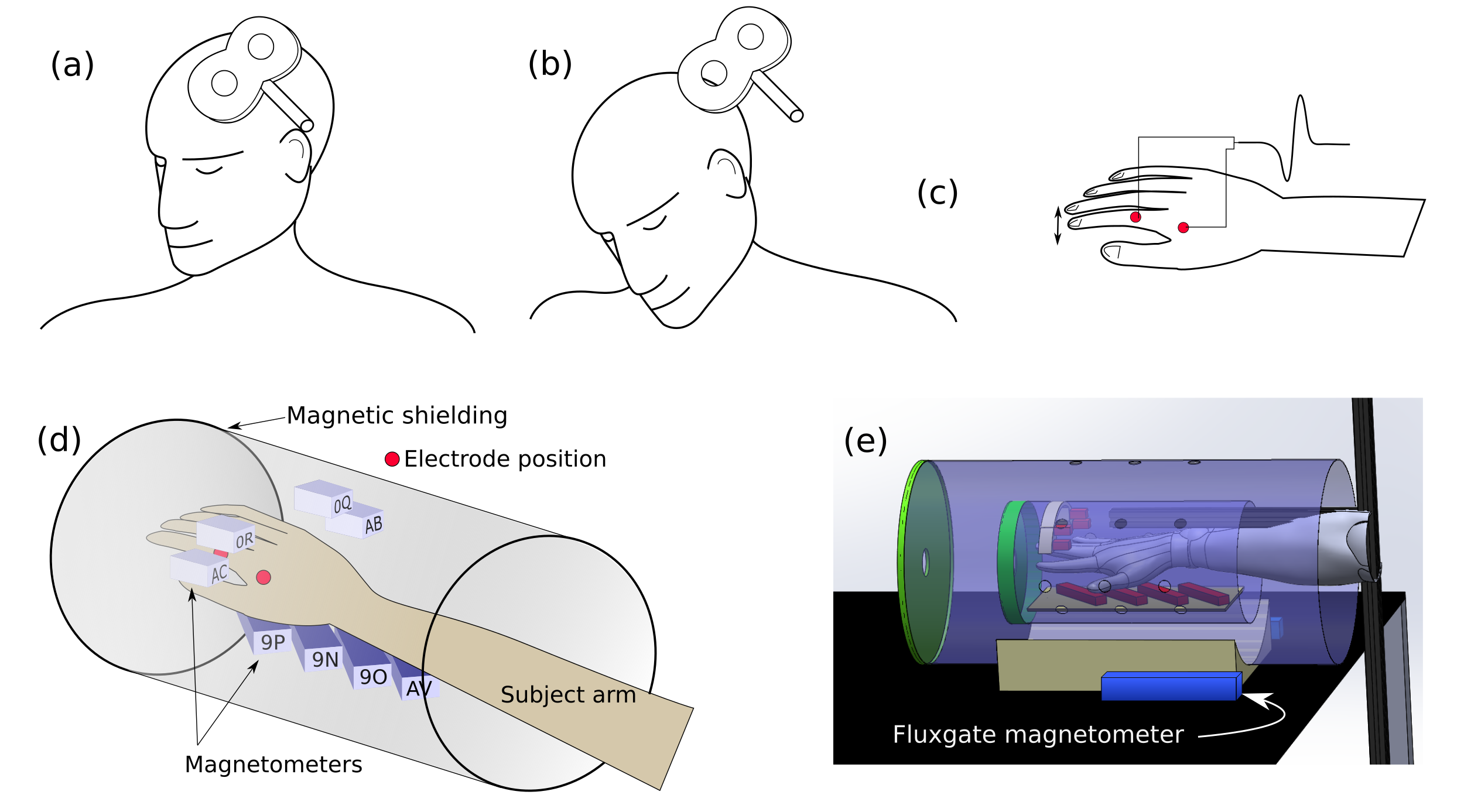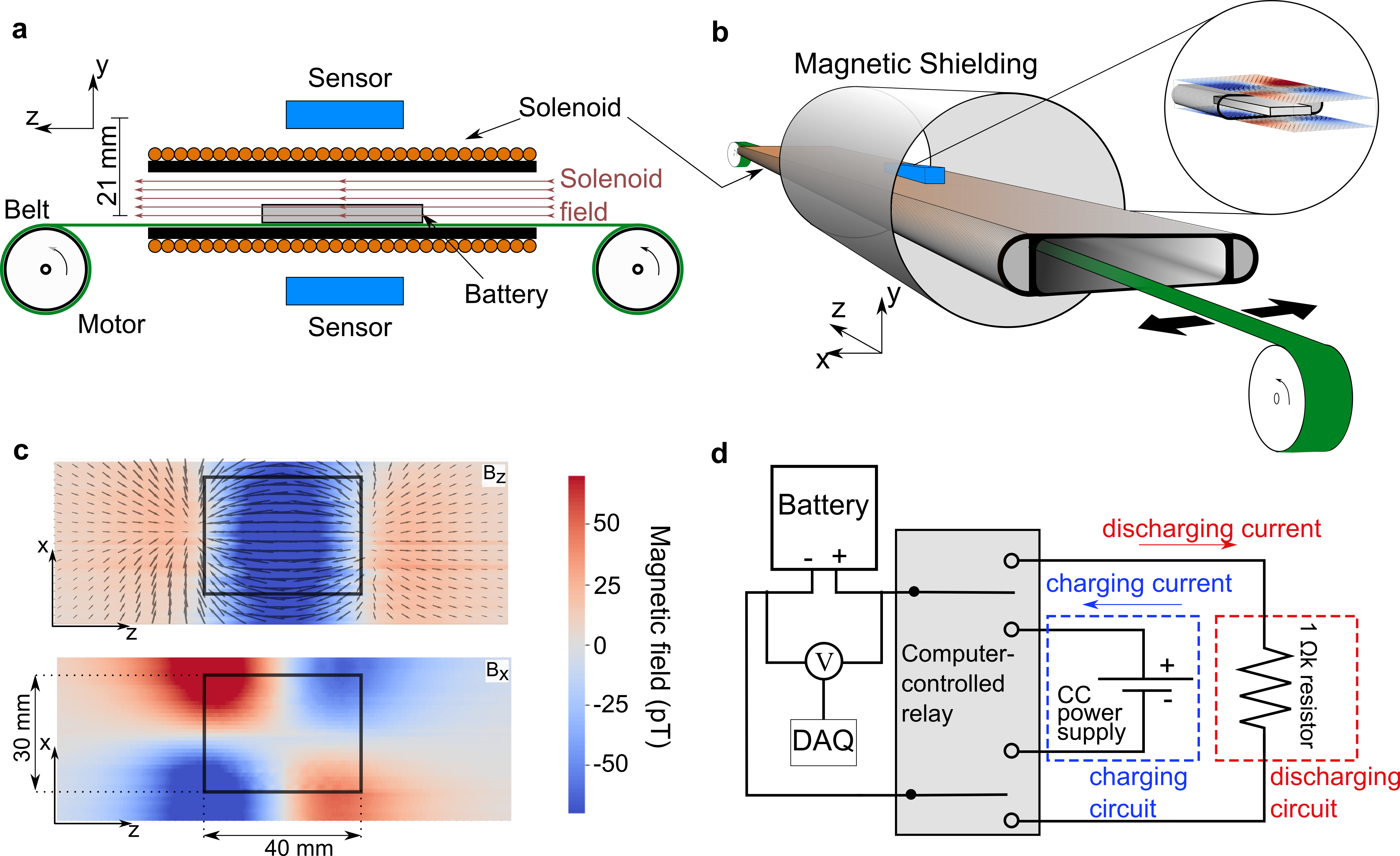Biomagnetic signals recorded from Transcranial Magnetic Stimulation invoked activity
Transcranial magnetic stimulation (TMS) has widespread clinical applications from diagnosis to treatment of various motor neuron disorders. We combined TMS with non-contact magnetic detection of TMS-evoked muscle activity in peripheral limbs to explore a new diagnostic modality that enhances the utility of TMS as a clinical tool by leveraging technological advances in magnetometry. The biomagnetic signals from evoked muscle activity contain detailed and unique information that is complementary to electromyograph (EMG) data. We recorded measurements inside a hospital setting using an array of optically pumped magnetometers (OPMs) inside a portable shield that encompasses only the forearm and hand of the subject. We present magnetomyographs (MMG)s of TMS-evoked movement in a human hand, together with a simultaneous surface EMG and electroencephalograph (EEG). The MMG provides important spatial and timing information to aid in analysis of the electric signal channels. Moreover, we identify greater detail in the magnetic recording beyond that of the EMG, which informs detailed temporal analysis of the EEG. This system demonstrates the value of biomagentic signals in TMS-based diagnoses and treatment and has widespread clinical and research potential. Learn More(arXiv)1

